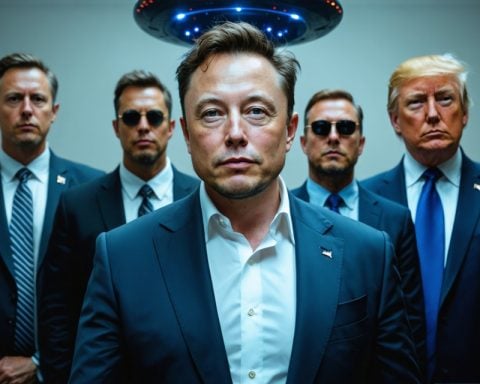The Galaxy S25 Series: A Quiet Revolution
The new Galaxy S25 smartphone series has introduced a groundbreaking feature: satellite messaging. This capability allows users to send emergency SOS messages via satellite, particularly useful in challenging scenarios where cellular signals fade. However, unlike Apple’s more flamboyant unveiling, Samsung took a more understated approach when presenting this technology.
Samsung’s partnership with Qualcomm enables this cutting-edge feature, but it’s currently limited to Verizon in the United States through a specialized service called Skylo. This localized availability likely contributed to Samsung’s decision to keep the fanfare to a minimum. Many potential customers may be in the dark about its existence since carriers have the power to enable or disable the service.
Moreover, the satellite messaging option is not a mandatory feature. Users must opt in to access it, which positions it as a niche benefit rather than a primary selling point. Samsung has chosen to place emphasis on more broadly appealing features of the Galaxy S25, such as enhanced AI cameras and rapid charging, which cater to a wider audience.
In summary, while satellite messaging is a significant advancement for the Galaxy S25, it’s not yet widely accessible. As adoption grows and services expand, this feature may soon take center stage in future models. For now, limited options are available for those who rely on Verizon, revealing a glimpse into the future of mobile connectivity.
Broadening Horizons: Implications of Satellite Messaging
The introduction of satellite messaging in the Galaxy S25 series marks a pivotal moment in mobile technology, with implications that stretch beyond individual convenience. This innovation could redefine communication standards, particularly in rural and remote areas where traditional cellular networks are unreliable or nonexistent. By enabling emergency SOS capabilities, Samsung is potentially transforming safety protocols for outdoor enthusiasts, travelers, and disaster-stricken communities.
Moreover, as satellite messaging becomes more mainstream, it reflects a larger trend towards global connectivity. In an increasingly interconnected world, ensuring that every individual can reach out in times of crisis can not only bolster personal safety but also enhance communal resilience, ultimately contributing to societal stability. The integration of satellite technology could drive competition among smartphone manufacturers, encouraging others to innovate in similar spaces, thus revolutionizing the global economy around telecommunications.
However, with technological advances come environmental considerations. Increased reliance on satellite infrastructure may lead to heightened space debris concerns and necessitate discussions about sustainable practices in satellite deployments. As this technology scales, it will be crucial to balance growth with ecological responsibility.
In conclusion, the satellite messaging feature in the Galaxy S25 represents just the beginning of a profound shift in mobile communication. Its successful integration could signal a new era of safety and accessibility, underscoring the importance of bridging technological divides while mindfulness of our ecological footprint.
Unveiling the Transformative Features of the Galaxy S25 Series
The Galaxy S25 Series: A Technological Leap Forward
Samsung’s latest Galaxy S25 smartphone series is making waves in the mobile technology landscape, not just for its impressive hardware specifications, but for its innovative features as well. One of the most talked-about advancements is the introduction of satellite messaging capabilities. This feature enables users to send emergency SOS messages via satellite, providing a critical lifeline in remote areas where cellular connectivity might be compromised.
Key Features of the Galaxy S25 Series
– Satellite Messaging: In collaboration with Qualcomm, Samsung allows users to send messages thanks to its partnership with Verizon and the specialized service called Skylo. While this is a major technological achievement, it is currently limited in availability and isn’t a core selling point, as users must explicitly opt in to use this feature.
– Enhanced AI Cameras: The Galaxy S25 series boasts advanced camera technology powered by artificial intelligence, which enhances image quality and optimizes photography in various lighting conditions.
– Rapid Charging: Users will appreciate the faster charging options, allowing for quicker battery replenishment without substantial wait times.
Pros and Cons
Pros:
– The satellite messaging feature offers unprecedented safety in emergencies.
– Advanced AI camera capabilities enhance photography experiences.
– Speedy charging technology reduces downtime for device usage.
Cons:
– Current availability of satellite messaging is limited to Verizon users.
– Users must opt in for satellite messaging, which may limit awareness and accessibility.
Use Cases for Satellite Messaging
1. Outdoor Adventures: Hikers and campers can benefit from the ability to send SOS messages when out of cellular range.
2. Remote Work: Professionals working in remote areas can stay connected in emergencies.
3. Travel Safety: Travelers in unfamiliar territories can ensure they remain reachable in case of emergencies.
Market Analysis and Trends
The integration of satellite messaging in smartphones marks a significant trend toward enhanced connectivity, especially in an increasingly mobile world. As smartphone manufacturers continue to innovate, expanded accessibility to satellite features across all carriers will likely become a priority.
Future Predictions
As adoption grows, it’s predicted that future iterations of the Galaxy S series will see broader implementation of satellite messaging capabilities, potentially leading to universal access across more networks, thereby transforming mobile safety and connectivity standards.
Pricing and Specifications
While specific pricing details for the Galaxy S25 series can vary based on configurations and regional offerings, the flagship models typically start at competitive prices, attracting a diverse consumer base. Furthermore, the S25 is expected to be equipped with state-of-the-art processors and high-resolution displays that appeal to both general and tech-savvy consumers.
Conclusion
The Galaxy S25 series represents a quiet revolution in smartphone technology, particularly through its satellite messaging capability. While currently limited, it serves as a precursor to what could be a widespread communication tool in the future. To learn more about the Galaxy S25 and its innovative features, visit Samsung.


















